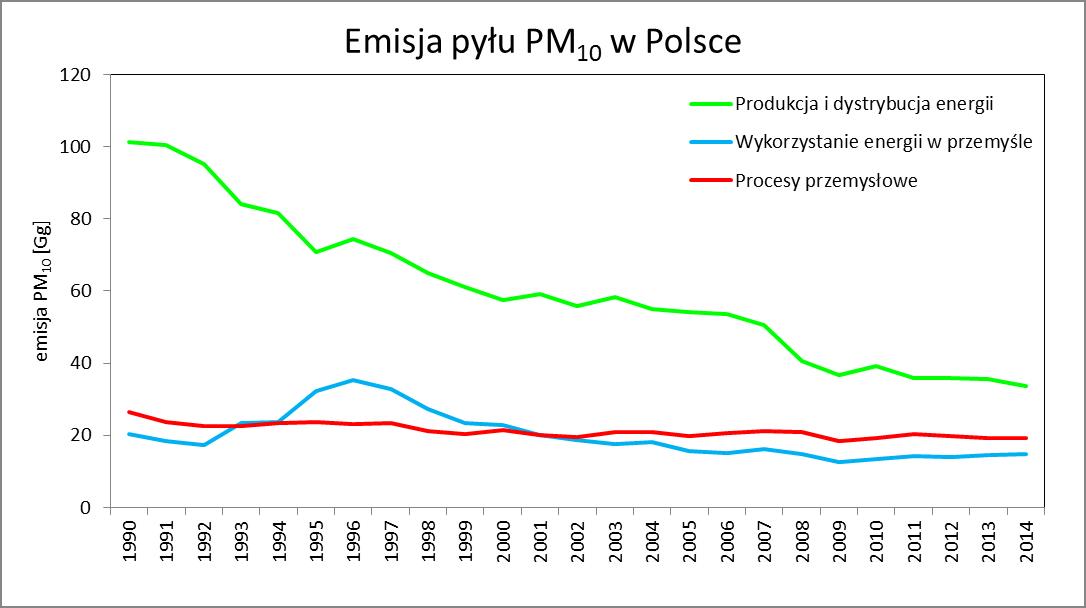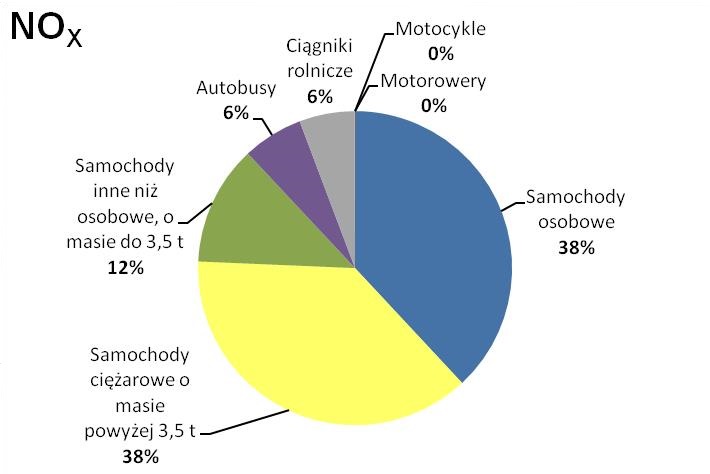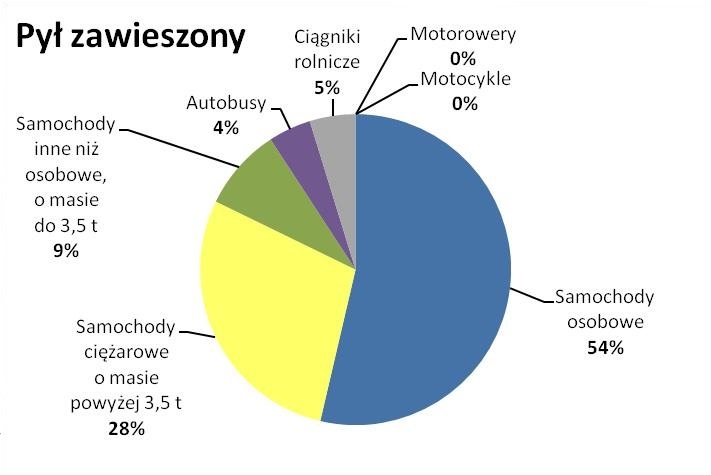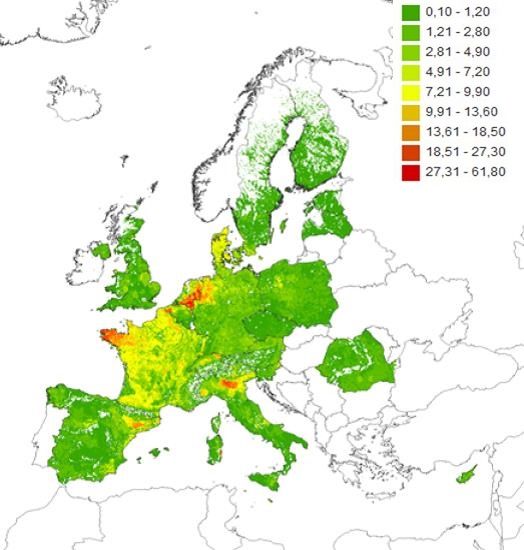Główne grupy zanieczyszczeń
Jest to bardzo ważna grupa zanieczyszczeń, najczęściej związana ze źródłami punktowymi (zwykle kominami). Do zanieczyszczeń przemysłowych zaliczamy substancje wyemitowane do atmosfery na skutek procesów spalania paliw, w których główną rolę odgrywa przemysł energetyczny, a także procesów technologicznych przemysłu chemicznego, hutniczego, rafineryjnego oraz kopalni i cementowni (Janka, 2014). Struktura przestrzenna emisji punktowej oraz ilość i rodzaj emitowanych związków uzależniona jest od rodzaju przemysłu zlokalizowanego w różnych obszarach. Należy podkreślić, że wielkość emisji zanieczyszczeń przemysłowych w ostatnich latach zarówno w skali Europy, jak i Polski systematycznie maleje (EEA). W 2009 r., zgodnie z raportem E-PRTR spośród 622 najbardziej uciążliwych zakładów w Europie, 55 znajdowało się w Polsce, w tym przede wszystkim elektrownie, elektrociepłownie.


ZANIECZYSZCZENIA ZE ŹRÓDEŁ MOBILNYCH - LINOWYCH
Mobilne źródłami zanieczyszczenia powietrza są podzielone na dwie kategorie: pojazdy poruszające się po drogach (motocykle, samochody osobowe i ciężarowe, samochody ciężarowe dostawcze i autobusy) oraz pojazdy poruszające się poza drogami i inne pojazdy silnikowe (samoloty, ciężki sprzęt np. budowalny, lokomotywy, statki morskie i śródlądowe, pojazdy rekreacyjne, np. skutery, małe pojazdy spalinowe np. kosiarki).
W przypadku emisji z transportu drogowego, jako pojedyncze emitory traktuje się odcinki dróg, dla których emisję określa natężenie i struktura ruchu pojazdów. Transport drogowy jest najważniejszym źródłem emisji tlenków azotu, a także ważnym źródłem emisji pyłu zawieszonego oraz węglowodorów aromatycznych. Emisja z transportu związana jest ze spalaniem paliw w silnikach pojazdów, ścieraniem okładzin, opon oraz unosem zanieczyszczeń z dróg. W Polsce największy udział w ogólnym bilansie emisji z tego typu źródeł mają samochody osobowe i ciężarowe.


ZANIECZYSZCZENIA ZE ŹRÓDEŁ KOMUNALNO-BYTOWYCH
Jest to emisja związana z ogrzewaniem indywidualnym, a także z gromadzeniem i usuwaniem odpadów. W uproszczeniu określa się ją jako emisję powierzchniową, z uwagi na duże skupienie małych emitorów, na relatywnie niewielkiej powierzchni. Przede wszystkim do tej grupy zaliczana jest emisja z indywidualnych systemów grzewczych, dlatego też wielkość emisji uzależniona jest od kilku czynników:
• temperatura powietrza w sezonie grzewczym,
• rodzaj i jakość stosowanego paliwa,
• typ ogrzewania (rodzaj kotła, sposób spalania paliwa),
• właściwości termoizolacyjne budynków,
• czynniki indywidualne (preferowana temperatura w mieszkaniu).
Emisja ze źródeł komunalno-bytowych, określana jako niska emisja (wysokość emitorów nie przekracza 40 m), jest podstawowym czynnikiem wpływającym na jakość powietrza w Polsce i przyczynia się do przekroczenia poziomów dopuszczalnych w zakresie stężenia pyłu zawieszonego. Przyczyną takiej sytuacji jest struktura zużycia paliw w produkcji ciepła, w województwie Dolnośląskim w 50% wykorzystywany jest węgiel.

Uśredniona struktura paliw stosowanych do ogrzewania w gminach w województwie dolnośląskim W 2014 r. (źródło: Raport o stanie środowiska w województwie dolnośląskim w 2014 r., WIOŚ Wrocław)
ZANIECZYSZCZENIA Z ROLNICTWA
Zanieczyszczenia z rolnictwa są szczególnym rodzajem emisji powierzchniowej. Zanieczyszczenia z rolnictwa dotyczą emisji z maszyn, upraw, hodowli, ferm, łąk czy lasów. Na obszarach miejskich ten rodzaj zanieczyszczeń ma znaczenie drugorzędne. Do głównych zanieczyszczeń emitowanych na obszarach rolniczych, w szczególności z gospodarstw produkcyjnych, należy amoniak NH3, podtlenek azotu N2O, a także odory. Amoniak wraz z innymi zanieczyszczeniami gazowymi, pochodzącymi z emisji komunikacyjnej, czy przemysłowej (tlenki azotu i siarki), tworzy w atmosferze aerozole o cząsteczkach nie większych niż 2,5 µm. Badania naukowe wskazują, że w wielu krajach jest to jedno z ważniejszych źródeł pyłu drobnego (fine) w atmosferze.

Emisja amoniaku NH3 z rolnictwa w 2008 r [t/grid 5x5km] dane pochodzą z bazy EEA

Emisja pyłu PM10 z rolnictwa w 2008 r [t/grid 5x5km] dane pochodzą z bazy EEA
Oprac. A.Drzeniecka-Osiadacz






